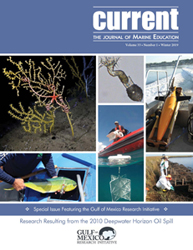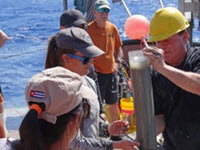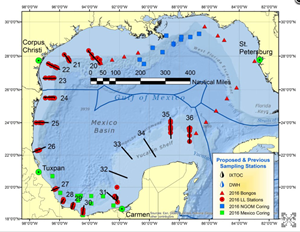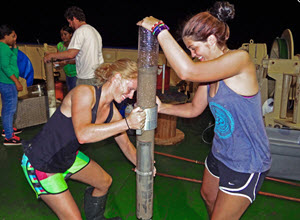Category Archives: C-IMAGE
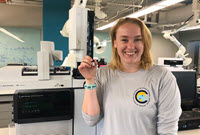
Marine ecosystems provide many valuable resources for humans, including seafood and petroleum. Conservation policies that protect marine ecosystems, especially pollution and petroleum-related policies, depend on accurate scientific data about the ways different marine species experience pollution. Madison Schwaab quantifies levels of toxic oil compounds in the bile and tissues (liver, muscle, and gonad) of fifteen Read More
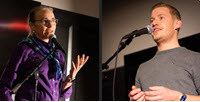
A journey reveals that her voice matters. A trip changes his work motivation. The theme of disaster response frames both of these touching and inspiring science stories. Members of the Gulf of Mexico Research Initiative community, Samantha (Mandy) Joye and Simeon Pesch, joined scientists Jessica Moreman, Laura Guertin, and Paula Buchanan and shared their personal Read More

The Loop podcast takes a deep dive into the Gulf of Mexico with the researchers studying the processes, mechanisms, and impacts of oil spills. Researchers from the Center for Integrated Modeling and Analysis of Gulf Ecosystems (C-IMAGE) discuss their studies with David Levin of Mind Open Media. C-IMAGE is an international research group studying mud, Read More

When the Deepwater Horizon incident occurred, not much was known about how conditions in the deep sea would affect oil biodegradation. Juan Viamonte uses high-pressure reactors that simulate conditions at depth to observe microbial degradation and help predict what might happen should another deep-ocean oil spill occur. Juan is a Ph.D. student with the Hamburg Read More
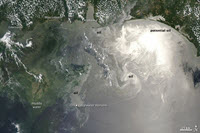
The Smithsonian’s Ocean Portal published an interactive tool featuring maps and graphics showing where Deepwater Horizon oil traveled. The story map also includes locations for where responders applied chemical dispersants on the Gulf’s surface and other sources where oil enters the Gulf, such as offshore oil and gas platforms and natural seeps. Try out the Read More
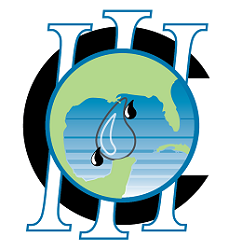
In honor of Teacher Appreciation Week, the consortium highlighted the efforts of Gulf Coast teachers who have accompanied Mud & Blood expeditions, gaining hands-on experience dissecting fish and processing sediment cores. Learn more about the Teacher @ Sea program here. Blogs written by current and previous teachers in the program can be found here on Read More
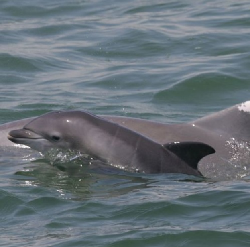
Dr. Kait Frasier recently appeared on the show to discuss how she uses marine mammal sounds to determine which species were present during the Deepwater Horizon spill and how they are functioning in their habitat present-day. Episode Summary (via Dispatches from the Gulf on Soundcloud): “Dr. Kait Frasier (Scripps Institution of Oceanography) is a pioneer in bioacoustics. Read More
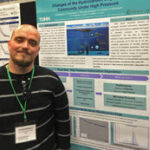
The Deepwater Horizon incident occurred at 1500 m depth, where the pressure is approximately 15 MPa, but little is known about how such high pressure affects the metabolic processes involved with oil biodegradation for bacteria that live there. Steffen Hackbusch conducts laboratory experiments that incubate microbes collected from deep-sea Gulf of Mexico sediment in seawater Read More
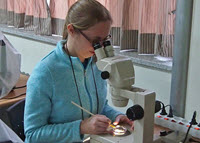
Meiofauna provide important ecosystem services such as waste removal to the deep sea-floor environment and can act as indicators of ecosystem health. Because meiofauna live a largely sedentary life due to their small size and sediment habitat, they are often unable to escape an area affected by unusual disturbances, such as the Deepwater Horizon incident. Melissa Rohal is Read More
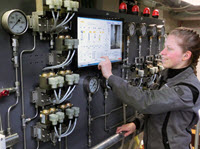
The 2010 Deepwater Horizon incident highlighted new challenges and science gaps in our understanding of and ability to respond to deep-water oil releases. Of particular importance is how highly pressurized oil and gas behaves in a deep-sea environment. Karen Malone uses her engineering background to build high-pressure tanks that replicate deep-sea conditions in a laboratory Read More

Scientists and outreach personnel created an on-line resource that examines two major oil spills in the Gulf of Mexico: The Deepwater Horizon in the northern Gulf and the Ixtoc in the southern Gulf. The Beneath the Horizon website, developed by the Center for Integrated Modeling and Analysis of Gulf Ecosystems (C-IMAGE) research group and Jake Price Productions, explores these spills, Read More

Researchers studied fish and seafloor sediments across the southern, western and northern Gulf of Mexico. Their goals were to understand the lasting impacts of oil spills and to develop baseline levels in Gulf waters. This aerial footage shows a sample of the work our researchers perform while aboard the R/V Weatherbird II. These studies include Read More
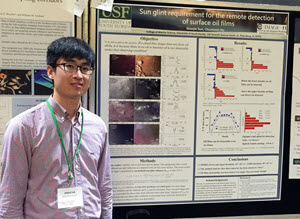
Those who have ever photographed the ocean on a sunny day have likely noticed how the reflected sunlight made the water gleam, often distorting the image. Shaojie Sun has quantified this phenomenon, called “sun glint,” to help address a longstanding limitation in scientists’ ability to assess oil seeps and spills using satellite imagery. Shaojie is Read More

The R/V Weatherbird embarks on a two-week research cruise in the Gulf of Mexico. Its mission is to collect and analyze fish and soil samples near the site of the Deepwater Horizon oil spill. Dave Hollander and Steve Murawski from the University of South Florida lead the team of oceanographers. The research is divided into Read More
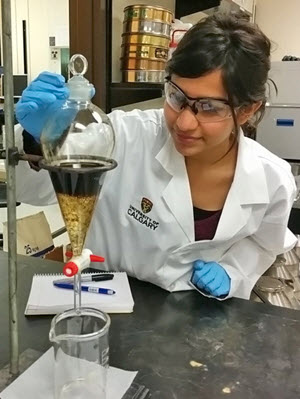
As a child in India, Aprami Jaggi witnessed firsthand how polluted water sources impact society. Her desire to make water remediation her life’s work has led her from Delhi to Calgary, Canada, to study oil mitigation. There she combines geochemistry and geophysics to hunt for scientific answers and practical solutions to the worldwide water pollution Read More
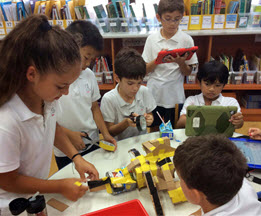
Communicating oil spill research is essential to improve society’s understanding about spills and their ability to respond to and mitigate them. The Gulf of Mexico Research Initiative (GoMRI) has been funding spill-related research since 2010. Here are ten outstanding education products and resources that GoMRI and its science community have developed to share what they Read More
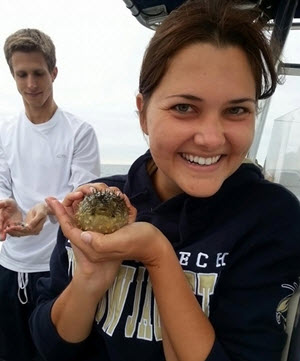
Emily Chancellor is applying her engineering and computer science background to a field that inspires her – marine science – focusing on how the oil spill may have impacted larval fish populations. Emily recently completed her masters in marine resource assessment at the University of South Florida (USF) and is a GoMRI scholar with the Read More
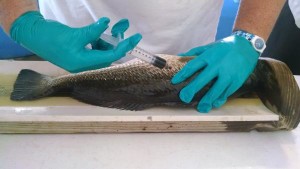
WUSF’s Steve Newborn talks with two scientists who are involved in the study, Dana Wetzel of Mote Marine Laboratory in Sarasota and Ben Prueitt of the Center for the Integrated Modeling and Analysis of the Gulf Ecosystem (C-IMAGE) research consortium. The study could have lasting impacts on our knowledge of how oil and dispersants used during the Read More
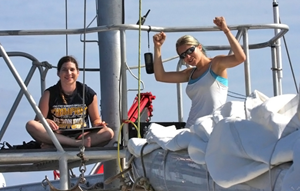
Kait Frasier listens to Gulf marine mammals to estimate how many there are and find out if their numbers are changing after the Deepwater Horizon oil spill. Kait sees dolphins as a good species to study because “everyone can see and understand them, not just scientists.” Kait, a Ph.D. student at the Scripps Institution of Read More
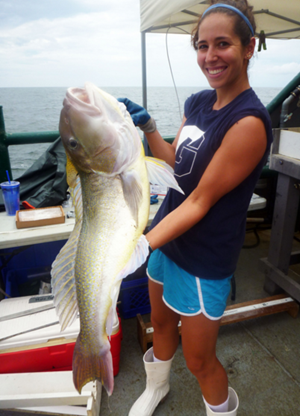
Susan Snyder’s experiences researching fish bile have shown her an overwhelming truth: to solve complex problems, one simply cannot work alone. To understand her findings, Susan has found that working with different scientists such as chemists, geologists and physicists is not only helpful, it is imperative. Susan is a master’s student at the University of Read More

Middle and high school teachers in Florida put on their sea legs, boarded the R/V Weatherbird II, and conducted science that matters to their students and communities. Dr. Teresa Greely (L) assists C-IMAGE Chief Scientist Leslie Schwierzke-Wade (middle) as she talks with 3rd graders at Jamerson Elementary in Florida during a Skype ship-to-shore video conference. Read More

